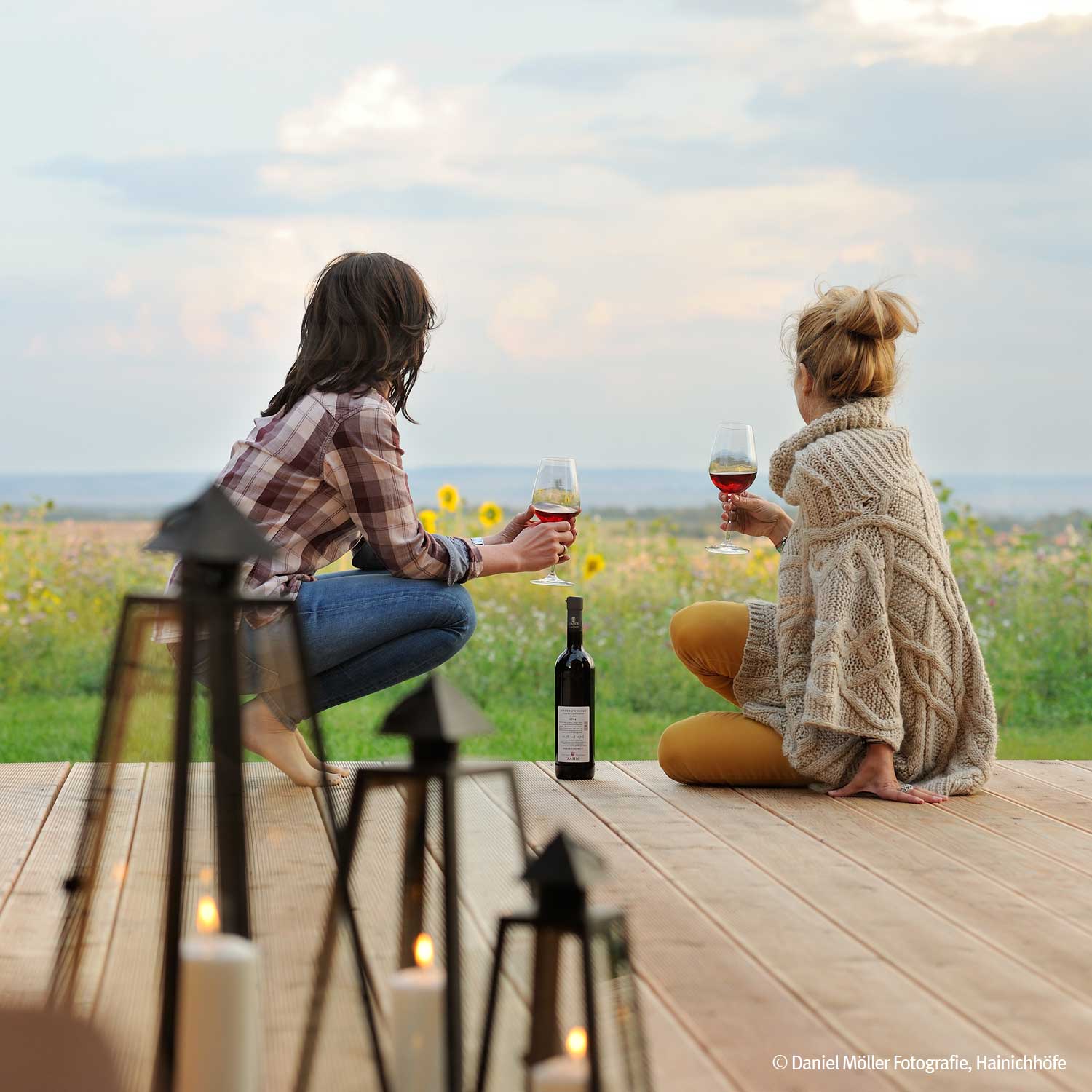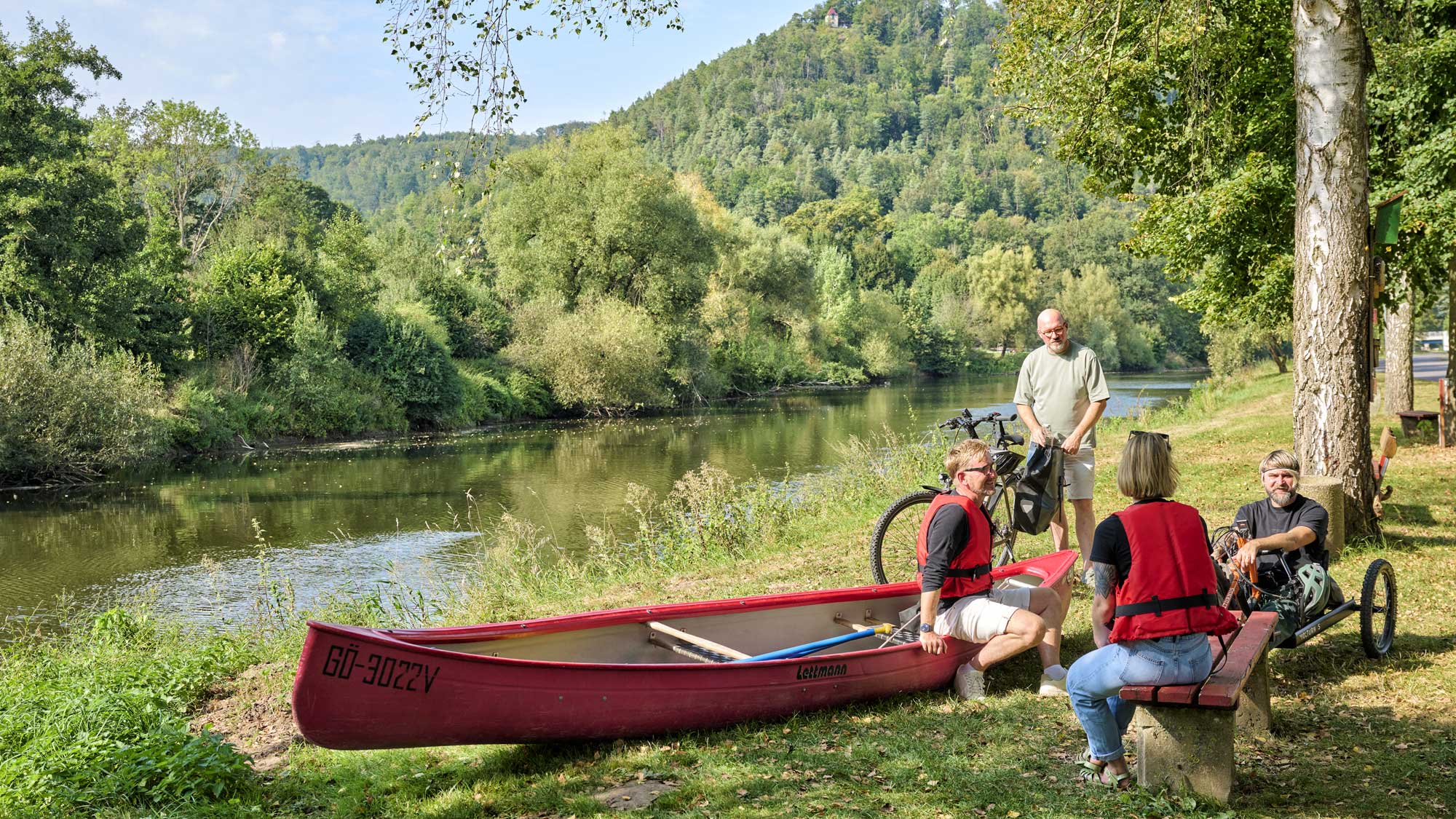You're in the right place! Whether in nature, in the middle of the city, for families, in the countryside, historic or traditional: among Thuringia's TOP hosts, everyone will find exactly the right address.
Trees, baubles and carols
Five facts about Christmas in Thuringia
#1 Lauscha is the birthplace of the Christmas tree bauble.
Lauscha, a small town at the heart of the Thuringian Forest, is the birthplace of the Christmas tree bauble. Legend has it that the local glass-blowers could not afford nuts and apples to decorate their Christmas trees. So instead, one of them made replicas of fruit out of glass. These tree decorations were first documented in 1847.
#2 It is Christmas 365 days a year in Lauscha.
For twelve months of the year you can soak up the magic of Christmas in Lauscha. The snow might be missing, but there is a beautifully decorated Christmas tree to admire all year round. What’s more, the top of the tree is adorned with what is probably the longest hand-blown tree decoration in the world. This spectacular glass ornament is one metre long and complemented by colossal glass baubles measuring between 12cm and 18cm.
Many of the local glassworks have shops that are festively decorated throughout the year. You can take inspiration from the displays, admire the artistry of the products on show, or purchase a bauble or two to take home.

You now know that Christmas tree baubles originated in Lauscha. But how did they come to be hung on Christmas trees all over the world? And what are the glass pickles all about?
#3 The tradition of the Christmas tree was exported by a Thuringian.
Adelaide of Saxe-Meiningen, Queen consort in England for seven years, imported the German Christmas tree to Great Britain to the delight of her many nieces and nephews. Among the nieces in question was the later Queen Victoria. She and her husband, Albert of Saxe-Coburg and Gotha, also of Thuringian descent, then ensured that the tradition of the Christmas tree became established in all British families. The impetus came from a picture printed in "The Illustrated London News" in 1848 showing the royal family grouped around the decorated tree.
#4 The first public Christmas tree was erected in Weimar.
A magnificent silver fir stands in Weimar at Christmas and tells the story of a very special festive tradition here: the story of the glittering Christmas tree that was set up on the market square to bring joy to all the children, rich or poor. The tree came from the parlour of the generous Weimar bookseller Johann Wilhelm Hoffmann. Erected in 1815, it was the first public Christmas tree in Germany. The custom soon spread beyond the city.
#5 A number of Christmas classics originate in Thuringia.
You probably know some of Germany’s most popular Christmas carols ‒ such as O du fröhliche (Oh how joyful) and O Tannenbaum (Oh Christmas Tree) ‒ but did you know that they come from Thuringia? The first was written in Weimar by Johannes Daniel Falk, who wrote the lyrics for the children in the orphanage he founded. The tribute to the Christmas tree was penned by Ernst Anschütz from Thuringia. He rewrote an existing song, turning it into a Christmas classic.
Header image: ©Marco Fischer, Thüringer Tourismus GmbH
Teaser image: ©Adrian Liebau, Farbglashütte Lauscha
Did you like this story?
Maybe, you'll like this too ...












